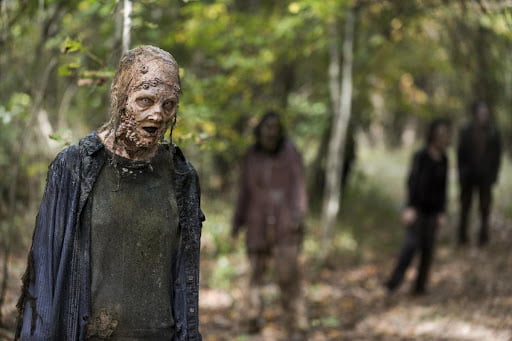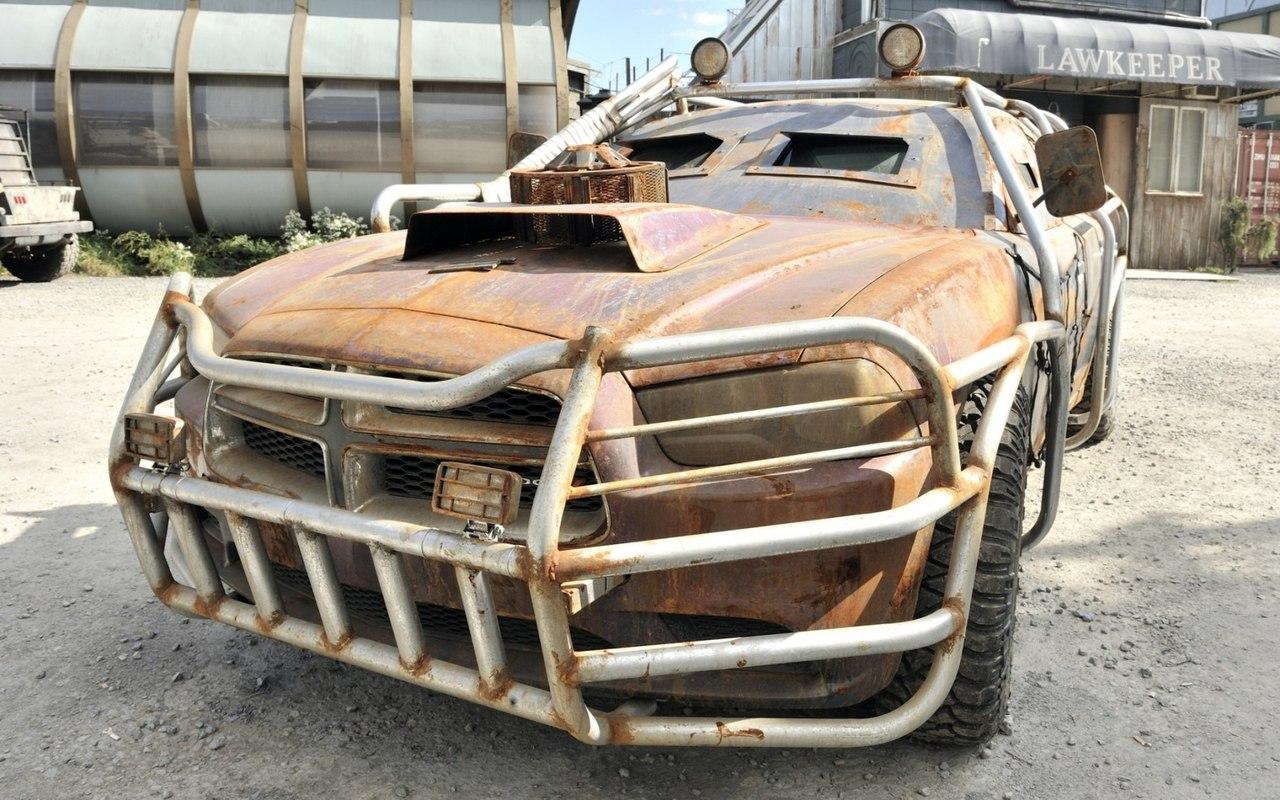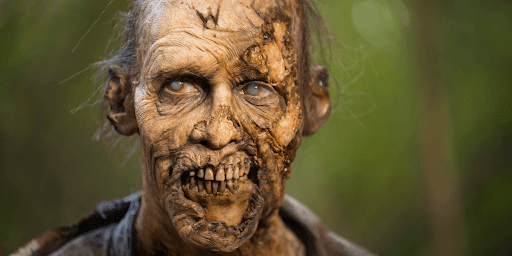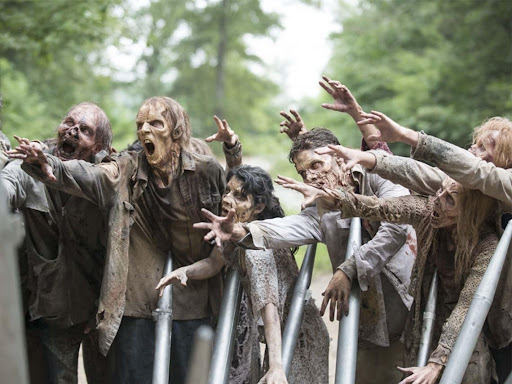No matter how fictional or uncanny it may seem, all zombie fanatics wonder, ‘Will there be a zombie apocalypse in the future?”
Fortunately, there is no definite positive answer to this chilling idea.
A small chunk of the scientific community hints at a zombie apocalypse, but the rationale still tips in opposition. Well, that didn’t mire the zealots from preparing for the imminent (more like inevitable) zombie apocalypse.
With growing zombie proponents, the notion is taking root among the communities. As much as rational minds despise this idea, they must revisit their hypothesis of nixing the possibility of a zombie apocalypse.
From the “impossibility of a zombie apocalypse” to “a possible zombie predicament,” rational minds strive to unearth every iota of truth behind the zombie apocalypse.
Even with solid justifications, certainty is pretty obscured. While we cannot determine the integrity, we can lend a bit of logic and clarification to this prevalent dilemma.
Zombie apocalypse- reality or fiction?
Let’s start by forgetting that zombie apocalypse happens solely in fictional books and films. Surprisingly (for the stringent rational minds), science and some researchers have established the looming zombie apocalypse. What validation and rationale do these researches offer? Let’s dig deeper.
Virus outbreaks
Virus outbreaks aren’t new to the scientific world. The world has witnessed virus outbreaks that brought human civilization near its demise. A virus outbreak of some sort can likely occur again. And one of the potential virulent nominees is rabies. It infects animals and is then transferred to humans through physical contact with the infected animal.
A virus strain of similar infectious nature but with enhanced deathly nature holds the potential to decimate the entire human civilization. The rabies virus infects various hosts and is transmitted through bodily fluids, typically transferred through bites of an infected animal. The virus doesn’t have an extended lifecycle. It can infect a fairly huge populace in a short period. Once infected, the host experiences various symptoms, like hallucinations, anxiety, restlessness, paralysis, and involuntary contractions, as the virus assaults the central nervous system.
Seems familiar? Indeed. The zombie virus exhibits a stark resemblance to rabies. Where most of us believe that only humans are our favorite meals, animals, too, are a preferable feast. Though not as widely favored as humans, animal brains are equally delicious. Zombie virus, indiscriminate of the type of host, infects bites and other physical contacts. Once infected, the virulent strain resides in the central nervous system.
Unlike rabies, which might result in the host’s death, the zombie virus appreciates the idea of a healthy life. The infected individual lives an entire lifespan without showing the slightest symptom of an ailment. But this seemingly mysterious virus renders repercussions far more damaging than humans ever anticipated. It can populate the world with living corpses. The virus may let you enjoy a healthy life, but it will turn you into a staggering corpse after death.
Characterized by its nature of rewiring the deceased brain, the zombie virus can potentially set the epidemiological disease modeling awry. Though the rabies virus exhibits a docile catatonic state and cannot incur a literal zombie apocalypse, what if this virus was manipulated to engineer such an effect? This intimidating question brings us to the next germane cause of the zombie virus outbreak.
Virus outbreak- but from a scientific facility
There is no denying that some research facilities are designed especially for gene and virus manipulations. These facilities study the nature of a virus, forecast the prevalence, and suggest possible preventive measures. A widely accepted and hailed theory regarding the zombie virus outbreak proposes.
The scientists and the researchers manipulate a virus (probably similar to rabies) and strive to redesign the genetic structure of that virus. This restructuring formulates a virus sinister enough to spread exponentially, potentially decimating populations. The facility workers somehow acquire and carry the virus outside the facility.
The virus spreads begin once the workers leave the facility and step outside. Anyone who gets in contact with them sustains the virulent infection, hence initiating a chain reaction. The virus continues its stride towards the epidemic while human civilization consolidates strategies to delay their inevitable doom.
It may seem like an excerpt from a zombie-based fiction film to all rational minds. But there is a reason why the theory is widely approved and accepted. If not engineered in a facility, viruses are constantly mutating and are present in nature.
Virus mutation is a concept that still causes genius minds to scratch their minds in utter confoundment. Before the scientists could fully grasp this idea, a newly mutated virus surfaces, only to add to the predicaments of the scientific community.
This brings us to our next probable cause of a zombie virus.

From mother nature
Perhaps, even the shadiest and the most notorious organizations would think twice before concocting a virus of such destructive nature. But there is a vastly different and sinister force that can plot such mass destruction: our dear mother nature. No other force is more creative and powerful enough to devise destructive epidemics.
And Mother Nature has proven its annihilating mettle time and time again. Take viruses, for example; from cholera to Ebola, human civilization was brought down to its knees. The destruction was vast and impossible to curtail. Plagues wiped out one-third population of the world, and Ebola turned humans into a living, breathing contradiction of the very term ‘humans.’
Mother Nature’s sinister and deadly ways incur gradual and consistent damage, making it frustratingly difficult to fight against such destruction.
Re-engineered human brains
Humans are miraculous; we developed cures for ailments and documented research for disease prevention. However, one area that challenges our vast knowledge and understanding is our brain and emotions. How our brain triggers, regulates, and generates feelings remains a mystery. It will be an understatement to say that humans have yet to try to re-engineer or at least explore (too far) to find an answer to this question.
Re-engineering the human brain is another potential way to incur an event akin to the zombie apocalypse. To diminish our fears and emotions, our brains can be artificially induced with a predatory response.
The experiment could have been a misadventure, so scientists experimented on the rats before sampling human brains. And the results were baffling and relatively frightening.
Scientists and researchers from well-known universities conducted the study. The study’s main objective was to identify the parts of the brain that generate motor responses and trigger animal predatory behavior.
Various aspects of the brain were considered, focusing on the amygdala. The amygdala governs emotional reactions and is responsible for starting the fear. This amygdala also regulates motor control for catching and hunting animal prey. The scientists tinkered with this part and induced light to manipulate the neurons.
A sensory device with light-emitting fiber optics was fastened to the heads of the mice. These with re-engineered brains stayed calm in the dark while turning into ravenous creatures in light. They went on destroying and thrashing anything that came their way. Also, re-engineered neurons lent strength to their biting power.
It was the tell-tale of mice that are much smaller in size and strength than humans. Imagine, if our brains were to be re-engineered, the destruction would be disturbingly far-reaching and menacing. However, it is a dwindling likability; the possibility cannot be entirely eradicated.
What if such a switch is utilized for biological warfare or military applications? Even the thought of such an experiment sends chills down the spine of most sane and sensible minds.

Parasite
Besides a virus that renders human civilization helpless, another possible way is the parasite outbreak. Some parasites profoundly affect the behavior of humans and turn them into living zombies. Such parasites already exist naturally in some organisms. One of the most notorious examples of such a parasite is from the fungi family- Ophiocordyceps.
This parasite has yet to infect humans; ants are its primary victims. The parasite reprograms an ant’s brain, and the infected ant develops a climbing obsession. The fungal parasite eventually results in the ant’s death, and the parasite spreads to start another lifecycle anew.
Another example of such a parasite is the lancet liver fluke, Dicrocoelium dendriticum, typically infecting the livers of grazing mammals like cattle or sheep.
However, this parasite follows a lengthy cycle before reaching the liver of the cattle. The primary hosts are slimy mollusks like snails or slugs. The parasite sticks to the slime of these land-roving mollusks. The ants then ingest this left-behind slime.
This parasite larvae attacks the brain of the infected ant and causes it to attach to the grass. The grazing mammals then eat the grass along with the infected ant. And this is how this parasite completes its lifecycle.
However, none of these parasites cause reanimated corpses to run amok. But they lend us the idea of the destruction by a real zombie apocalypse. With these examples, we can illustrate the potential possibilities of seemingly fictional constructs. Most suggest zero probability of anything akin to zombies or zombie apocalypse. On the other hand, zombie advocates suggest the apocalypse and cling to the idea, even if it has the slimmest chance of happening.
How long does human civilization survive the zombie apocalypse?
Let’s restate the obvious; the real zombie apocalypse would leave the entire human civilization in tatters. But would the whole of the human population instantly turn into zombies? If not, how long would human society stand against such a force?
Let’s rationally answer this piercing question.
A few university students conducted their research to study the spreading pattern, prevalence, and fatality of the hypothetical zombie virus. These students utilized the SIR epidemiological disease model to investigate the behavior of the hypothetical virus. The model divides the population into three groups; susceptible- those exposed to the virus; infected- those who have acquired the virus, and recovered- those who have healed or died.
The model then estimates the spreading rate of the infection as the individuals come in contact with or die off due to the virus. As the model suggests, the student observed the susceptible population (S), the zombie population (Z), and the dead population (D). The zombie virus would follow a lifecycle of S to Z to D. As the infection spreads, the students kept track of the individuals who acquired the virus and those who died.
The virus didn’t reflect any significant change in the spreading pattern in the first three weeks. However, after three weeks, the spreading habit swells considerably. A brief respite is observed as the susceptible penetrates the infected zone. This respite is short-lived as the virus takes over the exposed population, and the infected population moves to the D zone, with a dwindling recovery rate and dominant death rate. After day 100, the model shows only 273 survivors.
Besides this grim analysis, a positive follow-up study gives us some hope. The students studied the zombie epidemic model and applied another parameter to their research. They considered the combatting and newly adapted skills of humans to kill zombies.
With an epidemic on the rise, humans will undoubtedly adopt new ways and approaches for killing zombies more efficiently. Besides, surviving humans can strive to repopulate the world. The adapted skills and repopulation make human survival more feasible.
The students also exacted that, with time, the surviving humans have less chance of acquiring the zombie virus after learning to avoid zombies and fend for themselves. They concluded that advanced surviving skills and improved birth rates would allow humans to wipe zombies out and reign the world again.
The study is published in a renowned peer-reviewed journal. It is considered the standard of conclusive research on the zombie virus.

Which areas are more likely to survive the zombie apocalypse?
The received wisdom suggests that once the dead rise and mills around, the city dwellers are the most exposed to their gruesome fate. Abandoning one’s cozy apartment and retreating to rural territories is advisable. But what if one doesn’t have a chance of escaping? Or doesn’t have the will to do so?
What about these individuals?
No, not all of them aren’t going to die; few preemptive measures can offer you some help. However, it is imperative to note that zombies always look for fresh brains, and cities provide ample options for their favorite meals.
Experts advise that city-dwellers start behaving like they have a terrible hangover. The days when you didn’t want to leave your apartment and stay hibernated- that is your life now. So, deal with it and prepare yourself for extended hibernation.
Once you have learned about the outbreak,
a) plan an escape with enough food supplies;
b) if you cannot escape, then stack your cupboards and closets with sufficient food supplies
c) it is ideal if you reside in an apartment near the grocery shops.
The bigger the population, the higher the number of brain munchers. Densely populated cities are at risk of developing an epidemic state of the zombie virus. But these cities have the highest number of apartment blocks which can be utilized as safe havens. However, your havens are only safe when you have stored life-supporting supplies.
Let’s not forget the military and the healthcare organizations. The healthcare sector is provided the most funds from national budgets. These centers will serve their nation to the point of being rendered helpless. The military is undoubtedly the most vital organization with a robust infrastructure and powerful defense.
Where they can’t quarantine a vast population in their centers or academies or go to war with this virus, they can assist in managing the apparent mass hysteria.
These organizations may offer some help at the initial stage of the virus spread. If you can avail of some of their services, benefit from them optimally.
Sooner or later, these organizations will be handicapped and rendered useless as the virus infiltrates their guards. Lastly, but most importantly, run from the infected area. No matter how well-prepared or efficient your survival plan might look, you are still exposed to the virus. It would help if you started preparing for the escape as soon as you learned about the outbreak. Pack your bags and plan to live in the mountains (literally).
The rural retreats and even mountains offer more defense against the zombies. Considering the limited movements of zombies, most of them can’t move fast or even climb over fences. Therefore, you should leave your cozy apartment and find comfort in the wilderness. If you don’t prefer nature, make an abandoned house in a scarcely populated area your humble abode.
Conclusion
Even with enough research, the question will there be a zombie apocalypse in the future looms around. We still need more facts to establish this as the truth. Where scientific communities continue downplaying the zombie apocalypse, the believers will strive to prepare against such destruction.
Well, we have spilled what we had in store for you. The possibility of a zombie apocalypse depends on which side you prefer. The opposition zeroed all the options, or the proponent formulating an efficient combat plan.




